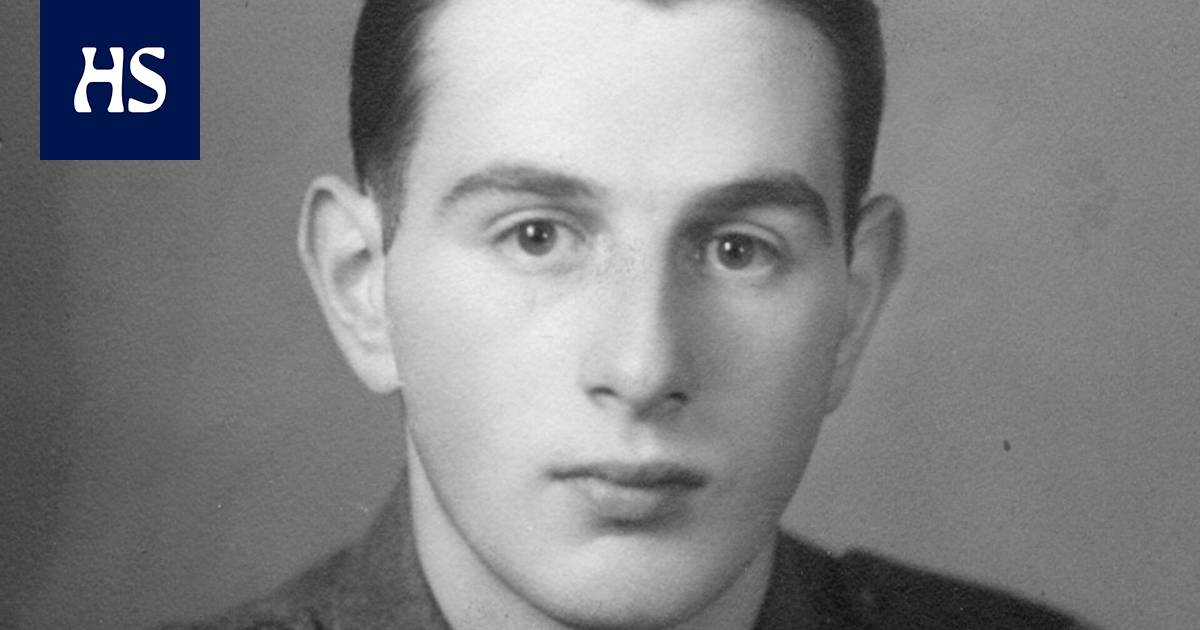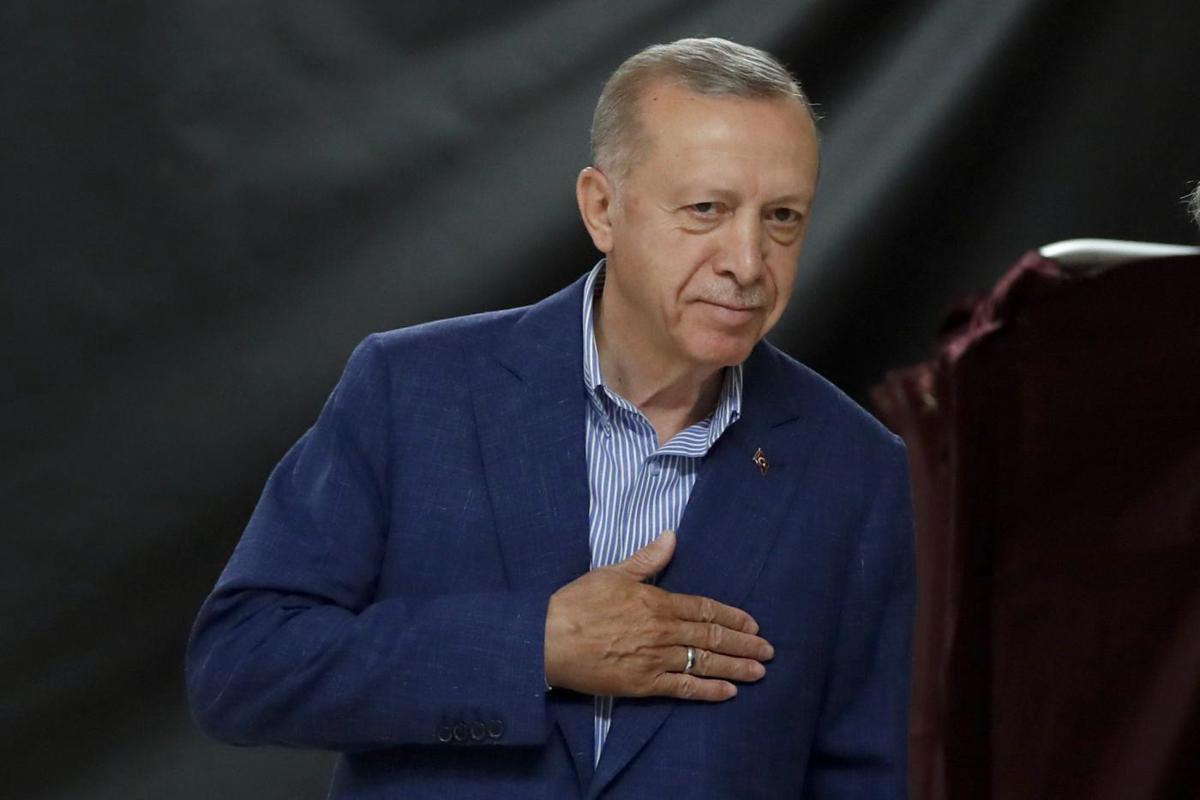The family thought that the soldier who spoke on the radio had been captured in the continuation war. The truth about the young soldier’s death only came out this spring.
Balsa was so thin that working it required precision. A teenager Egon Rosenthal was handy with his hands and knew how to make slivers from a delicate wooden board.
Rosenthal was nice too. He tried to teach his cousin, four years younger, to make airplanes. Nothing really came of it with the child’s motor skills or patience, but the most important thing was the cousin’s company.
“He was my idol”, who tried to learn the secrets of gliders Leo Skurnik recalls now, 80 years later.
Leo Skurnik remembers his cousin Egon from his childhood.
He doesn’t have much more memories of Egon Rosenthal, because he joined the army at the age of 18. It was 1942 and the continuation war.
According to the last information, Egon Rosenthal disappeared on June 25, 1944 in Konkkala, Vyborg county.
“I believed until today that he was captured”, says Adiel Hirschovits. That’s how events were told in the family.
Hirschovits’ mother was related to Skurnik and Egon Rosenthal’s cousin. Hirschovits is the chairman of the tradition guild of Jewish war veterans and helped to find out Rosenthal’s fate.
In the family the circulating story says that Egon, who disappeared from the battlefield, was given a vital sign during the war.
According to the story, Egon would have become a prisoner of war and spoke on a Soviet radio broadcast. A propaganda voice called Tiltu said on the radio that he was talking to Finnish prisoners of war. Egon Rosenthal sent greetings in the program, those who heard the broadcast said.
Worked as Rosenthal’s Lotta Henie-sister heard about the broadcast and took action. Leo Skurnik remembers that Henie, known as a woman of action, also called him a minister Urho Kekkonen demanding answers.
In Sisko’s opinion, Kekkonen should have settled the matter with the Soviet Union. When nothing happened, he called again. Later, Henie also went to the Soviet Embassy to find out about the matter.
“Tough mimmi”, Hirschovits describes and makes both men laugh.
Siblings Egon and Henie Rosenthal pictured in their uniforms.
But Egon Rosenthal was nowhere to be found, and the mother sat in vain at the window of the Arkadiankatu home, waiting. Father Raphael Rosenthal gave Egon the wallet he bought for Hirschovits as a bar mitzvah gift, because he didn’t think his son would ever come back.
In 1964, Egon Rosenthal was declared dead.
It was quiet for a long time. These issues were not discussed, Skurnik explains. We just got on with life.
Skurnik didn’t even remember his cousin for years.
Until in August 2020, Hirschovits received a message. The Karelian Wall search team from St. Petersburg had found Rosenthal’s touch plate on the Karelian Isthmus. Buttons, a knife, a helmet, a skull and a few pieces of bone were also found.
Based on the observations made by the search team at the discovery site, it was concluded that Rosenthal was killed by a direct hit from a grenade.
The search team found the helmet in the rhizome.
A year At the end of 2021, the remains were brought to Finland via Vaalimaa and examined by the Institute of Health and Welfare (THL).
The case was not quite simple, says THL’s research manager, docent of forensic genetics Jukka Palo.
Usually, THL identifies those who fell in the war in Finland with the help of DNA sequencing. In practice, a sample is taken from inside the bone, from which the mitochondrial DNA sequence inherited from the mother is amplified and read.
The obtained DNA identifier is then compared with the DNA identifier of a possible maternal relative. Similarities in the samples may indicate that the individuals are related.
The similarity can also be a coincidence, but, for example, together with a sensor plate, the information can be considered sufficient to identify a person.
The touchpad was clearly damaged, but still easily readable.
Sequencing success depends on the quality of the sample, including the weather conditions in which the bone has been.
The denser and thicker the bone, the more likely it is to get a DNA tag. In Rosenthal’s case, however, time and nature had done their job, and the bones were very porous.
“The situation immediately looked quite desperate,” says Palo.
That’s what it turned out to be. It was impossible to get a proper dna identification. However, THL researchers thought that the necessary DNA could be found in the bone, but in such small fragments that it could not be analyzed with the methods in use.
“We decided to try a new generation sequencing method for the first time,” says Palo.
The DNA isolated from the bones was sent to the sequencing laboratory of the Biotechnology Institute of the University of Helsinki in Viikki. There, a technique was tested that makes it possible to read even very small pieces of DNA.
In isolation very little human DNA was found, but still enough. Sequencing and analysis were successful, and the DNA tag matched that of the reference person.
It is not yet possible to use the method to identify fallen victims more widely.
“This was a very extraordinary process,” says Palo.
Finally, almost three years after the discovery of the sensing plate, the answer was finally ready.
Egon Rosenthal was not captured, but died on the battlefield in Konkkala. He was 20 years old when he died.
The discovery makes him the first fallen Jew to be found in the field in a long time and brought home for burial.
In total, over 300 men and twenty women participated in the Winter and Continuation War. 22 of them fell. Seven remained on the field, meaning their bodies have not been found. Rosenthal was one of those who were not found and at the same time the only one who was finally brought home. Finding him is a big deal for the church as well.
Leo Skurnik and Adiel Hirschovits believe that finding Rosenthal only now is a lucky coincidence. With older technology, identification would hardly have been successful.
But if Rosenthal died on the field, how did he send his regards to his relatives on the radio?
It can no longer be found out, but Hirschovits has a guess, the accuracy of which is unlikely: the Red Army could find Rosenthal’s military passport and use it to use his name in the broadcast.
And maybe the relatives were reluctant to believe that Egon spoke on the radio. A prisoner of war would still have had a chance to return.
Now the information has brought peace to the family. Memories of cousin Egon have come back to mind in different ways than before, says Leo Skurnik.
On May 30, Egon Rosenthal will be laid to rest in the Jewish cemetery of Helsinki with military honors.
#Helsinki #breakthrough #Helsinki #laboratory #mystery #missing #soldier #Continuation #War #revealed









